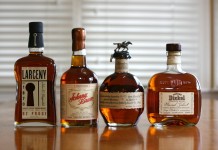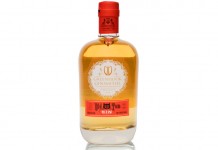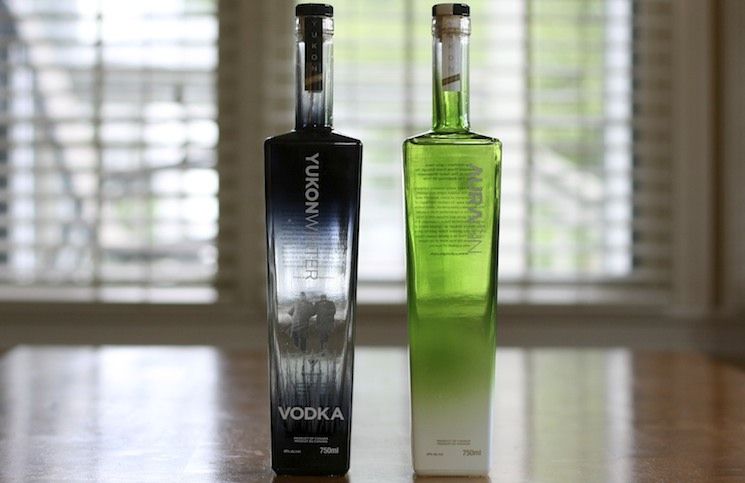
It’s with a single line that Ian Fleming, and by extension James Bond, messed with one of the most elegant and perfect cocktails in the world. The martini is a beautiful balance of gin, vermouth, and sometimes bitters. While there are thousands of variations on this classic drink, this simple combination is what makes up a true martini, and Iam Fleming knew that.
Fleming spent a great deal of time in the Dukes Bar at Dukes Hotel in St. James, London. It was at this bar that he eavesdropped on often libatious conversations from members of the British government who came to Dukes to drink. Dukes Hotel and Bar is located right around the corner from Buckingham Palace and has been one of the major hotels of choice of foreign dignitaries and notable people.
Fleming not only dreamed about being a part of the world of international politics, he also held many of his fellow drinkers in contempt. Bond embodies both Fleming’s fantasy and his disdain, and in both the books and the movie you can see Fleming’s love-hate relationship with Bond. This love-hate relationship also extended to the British elite, and it’s with the martini that Fleming shows his ability to thumb his nose at them.

Another reason why Fleming may have had Bond order a shaken martini was that by 1953, vodka was beginning to become more and more popular. In Russia and Poland vodka was often served frozen or in carafe over ice, and American bartenders would simulate this by shaking the vodka with ice, which both softened it through dilution and chilled it down.
Ian Fleming and Bond were wrong to call for the martini shaken, and it’s a mistake that has impacted literally millions of drinkers. In mixology, there’s a general rule that you shake drinks that have citrus or egg in them, and you stir drinks that are all spirits. If you were to stir a lemon drop, the citrus and sugar wouldn’t integrate with the spirit well enough and the drink may not get the amount of dilution it needs. For a martini, there is no citrus in the mix, and both the gin and the vermouth intermingle well when you stir.
Shaking not only mixes ingredients, it also dilutes and aerates it. In the mixing tin the ice collides with itself and the walls of the shaker, shearing off into small pieces which quickly melt. The collision of the ice also helps draw air into the drink from the shaker. One of the defining qualities of a martini is the smooth and silky texture of the drink. This is one of the reasons it’s served in a martini glass, as it shows off the drink’s body and texture. When you shake a martini, you aren’t integrating the elements in a way to create a smooth texture – you are doing the opposite. A shaken martini gets diluted too fast and gets too much air mixed into it. The result is a slightly frothy and watered down drink.
When you stir a martini, you allow the ice to slowly melt and incorporate into the drink, which helps give the drink a soft and silky texture. Stirring isn’t a difficult proposition, it’s just not as dramatic or showy as shaking it.
Gin is the backbone of a good martini, its botanical mix essential to balance out the vermouth. Vodka doesn’t have this structure and consequently it doesn’t play as well with vermouth. This is one of the major reasons that vodka drinkers don’t like much (if any) vermouth in their drink. It’s also perhaps why Fleming re-envisioned Bond’s signature drink as the Vesper (named after Bond girl Vesper Lynd).

The Vesper (and it’s not a Vesper martini – people need to resist the urge to tack on “martini” at the end of everything) combines vodka, gin, and Kina Lillet, which is a softer and sweeter French aperitif wine (we prefer David Wondrich’s updated version of the drink). Again, Bond orders this drink shaken. Here it’s not as much a faux pas, as the Lillet is made from a blend of wine and macerated citrus liqueurs and sugar. While we prefer the Vesper stirred, it can be argued that with the citrus in the Lillet, it qualifies to be shaken. The drink also is served in a coupe, or cocktail glass, and not a martini glass, an additional testament to the fact that it indeed is an entirely different drink.

Deconstructing what a fictional book and film character drinks is slightly absurd, but so is taking drinking advice from a fictional character. In the end, you should always drink the things you enjoy the way you enjoy them regardless if it’s “right” or “wrong.” The biggest issue is that many have never tried a classic gin martini prepared the best possible way, stirred, not shaken. Done right, it’s one of the sexiest and most elegant drinks in the world, the kind of drink you’d think that a top British spy would proudly order for his drink.
Be sure to listen to our radio program, Martinis, Shaken or Stirred?
Also here’s our recommended martini recipe:
Classic Gin Martini:
2 1/4 oz of Gin (We prefer Nolets, Plymouth or Beefeaters)
3/4 oz of Dry Vermouth (we prefer Dolin Dry or Noilly Prat Dry)
Lemon TwistPour gin and vermouth into a mixing glass, add ice and stir. Strain using a julep strainer into a chilled coupe glass and garnish with a lemon twist (or three olives wet).
















